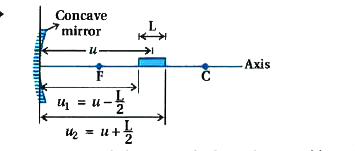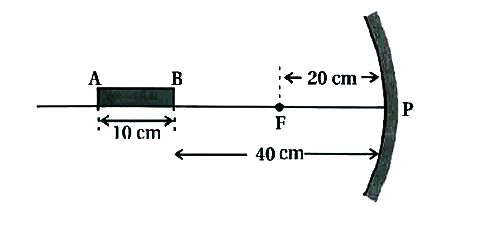Between the primary and secondary rainbows, there is a dark band known as Alexandar.s dark band. This is becauseSolution in Gujrati
light scattered into this region interfere destructively.
there is no light scattered into this region.
light is absorbed in this region.
angle made at the eye by the scattered rays with respect to the incident light of the sun lies between approximately 42∘ and 50∘.
The correct Answer is:B, D
Alexandar.s dark band is a region between primary and secondary rainbows, the light rays scattered from which, do not enter into the eyes of an observer (aiming at rainbows) and hence such a region appears to be dark i.e. it is not seen. Thus option (B) is correct.
When we observe primary and secondary rainbows at a time, we find that primary rainbow gets finished at 42∘ whereas secondary rainbow starts at 50∘ (approximately). Hence region between these two rainbows appears to be dark which is known as Alexandar.s dark band. Thus option (D) is also correct.
Topper's Solved these Questions
- RAY OPTICS AND OPTICAL INSTRUMENTSBOOK - KUMAR PRAKASHANCHAPTER - RAY OPTICS AND OPTICAL INSTRUMENTSEXERCISE - SECTION-C (NCERT EXEMPLAR SOLUTION) (VERY SHORT ANSWER TYPE QUESITONS)
5 Videos
- RAY OPTICS AND OPTICAL INSTRUMENTSBOOK - KUMAR PRAKASHANCHAPTER - RAY OPTICS AND OPTICAL INSTRUMENTSEXERCISE - SECTION-C (NCERT EXEMPLAR SOLUTION) (SHORT ANSWER TYPE QUESITONS)
6 Videos
- RAY OPTICS AND OPTICAL INSTRUMENTSBOOK - KUMAR PRAKASHANCHAPTER - RAY OPTICS AND OPTICAL INSTRUMENTSEXERCISE - SECTION-B (NUMERICALS)(NUMERICAL FROM .DARPAN. BASED ON TEXTBOOK )
12 Videos
- MOVING CHARGES AND MAGNETISMBOOK - KUMAR PRAKASHANCHAPTER - MOVING CHARGES AND MAGNETISMEXERCISE - SECTION D (MCQs ASKED IN COMPETITIVE EXAMS)
34 Videos
- SAMPLE QUESTION PAPER BOOK - KUMAR PRAKASHANCHAPTER - SAMPLE QUESTION PAPER EXERCISE - PART-B SECTION-C
5 Videos
Similar Questions
Will the focal length of a lens for red light be more, sam or less than that for blue light
View SolutionA short object of length L is placed along the principal axis of a concave mirror away from focus. The object distance is u. If the mirror has a focal length f, what will be the length of the image ? You may take L<<|v−f|.

View SolutionAs shown in the figure, a thin rod AB of length 10 cm is placed on the principal axis of a concave mirror such that it.s end B is at a distance of 40 cm from the mirror. If the focal length of the mirror is 20 cm, find the length of the image of the rod

View SolutionElectric charge Q having mass M moves on a circular path of radius R with velocity →v, perpendicular to uniform magnetic field B. When a particle completes one revolution, work done by the field is _______
View SolutionTwo charges –q and +q are located at points (0, 0, –a) and (0, 0, a), respectively.
(a) What is the electrostatic potential at the points (0, 0, z) and (x, y, 0) ?
(b) Obtain the dependence of potential on the distance r of a point from the origin when r/a>>1 .
(c) How much work is done in moving a small test charge from the point (5,0,0) to (–7,0,0) along the x-axis? Does the answer change if the path of the test charge between the same points is not along the x-axis?
View SolutionBetween the primary and secondary rainbows, there is a dark band known as Alexander's dark band. This is because
View SolutionDark bands are
View SolutionDark bands of myofibrils are known as____band.
View SolutionDark band are
View SolutionBetween the primary and sencondary rainbows, there is a dark band known as Alexander's dark band. This is because
View SolutionDistance between two adjacent bright bands or dark bands is called
View SolutionBetween the primary and secondary rainbows, there is a dark band known as Alexandar's dark band. This is because
View SolutionDark bands are
View Solutionप्राथमिक तथा द्वितीयक इन्द्रधनुष के बीच एक अदीप्त पट्टी होती है जिसे अलैकजेन्डर की अदीप्त पट्टी कहते है। ऐसा इसलिए है कि
View SolutionBetween the primary and secondary rainbows, there is a dark band known as Alexander's dark band. This is because
View Solution
